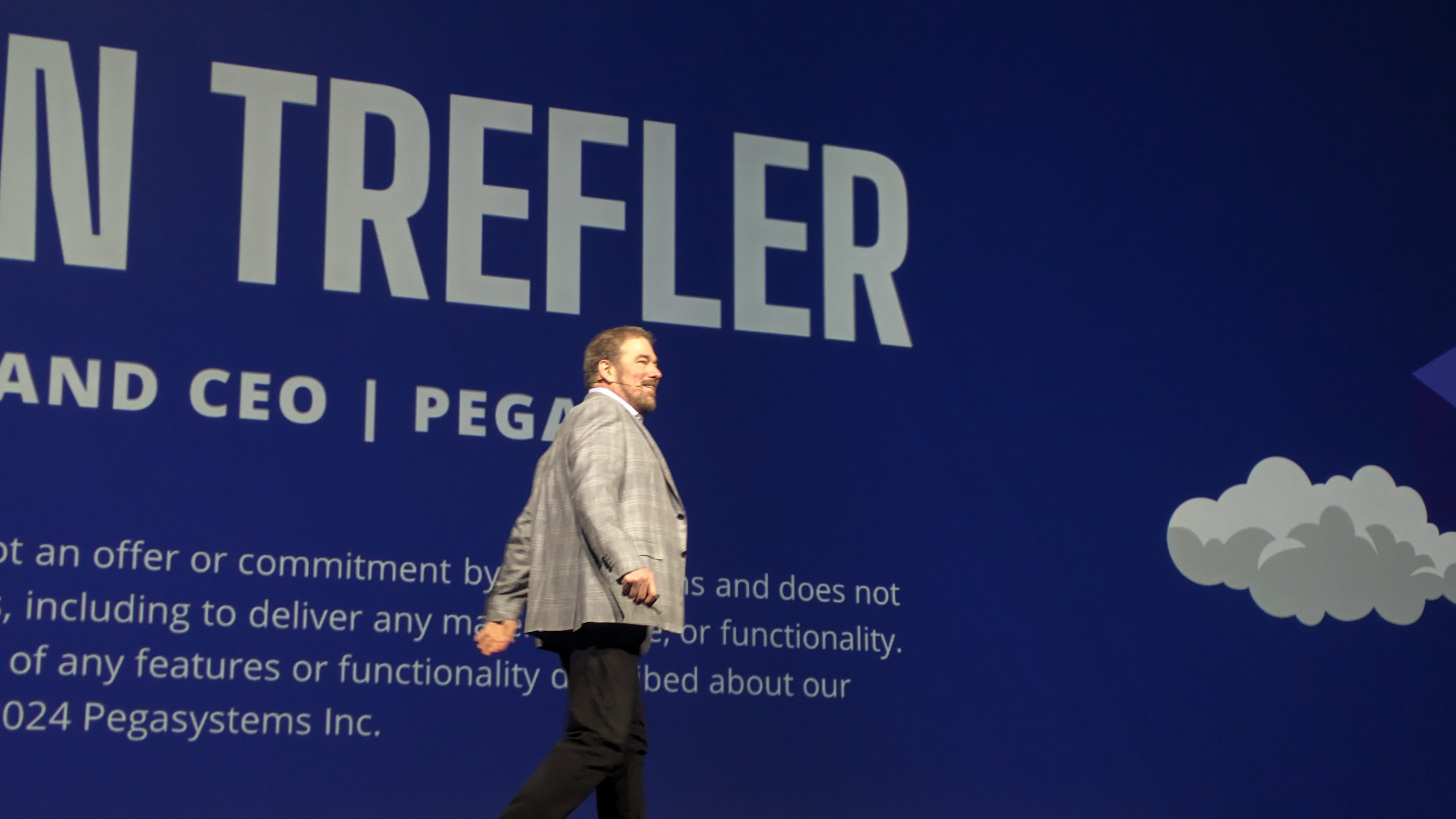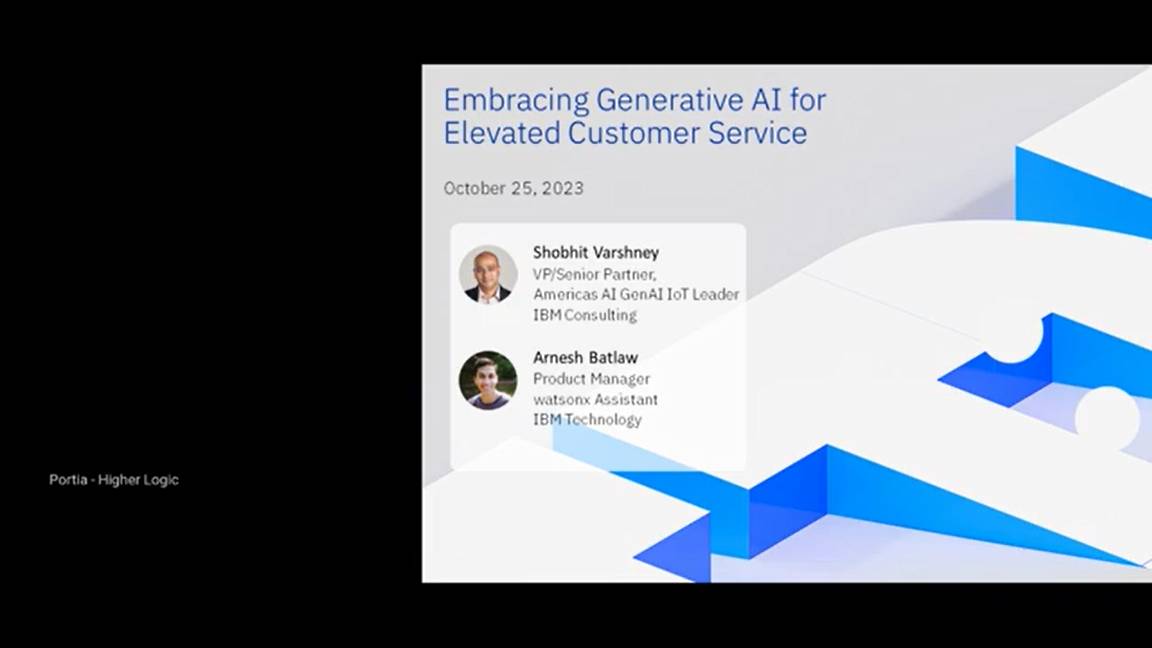Pegasystems CEO Alan Trefler wants to help enterprises sift through the AI 'hype'
Alan Trefler, CEO of Pegasystems, believes there is still a lot of bluster around how AI – here’s how he thinks businesses can extract real value from AI


During his opening address at PegaWorld Inspire 2024, Pegasystems CEO Alan Trefler acknowledged we are currently moving through an investment bubble in generative AI; but he was quick to make clear there is real value to be had in applying the technology appropriately.
“There’s so much confusion around AI, there’s so much hype and there’s so much nonsense. There’s a bubble frankly, but there’s a lot of real stuff too,” he added.
“So I think the challenge is how do you think about this in a way you can cut through the noise and really decide what you can consume and who you can consume it from.”
During an executive roundtable Trefler told ITPro the fervor around the technology has led to widespread misuse of the term and pushed businesses to apply LLMs specifically where perhaps they are not needed.
“People are calling all sorts of stuff AI that’s not, at least in my mind, and they are ascribing to it magical, agentic qualities.”
He explained that this has been a familiar process in the technology industry, and said part of the responsibility for addressing this problem falls on the media scrutinizing businesses who make bold claims about what their tools can do.
“These enormous bubbles occur. Having said that, there are parts of the technology that are extremely useful, extremely beneficial, and I think what’s incumbent upon you guys candidly, is to maybe try to help the potential buyers separate the signals from the noise ”.
Get the ITPro daily newsletter
Sign up today and you will receive a free copy of our Future Focus 2025 report - the leading guidance on AI, cybersecurity and other IT challenges as per 700+ senior executives
During his keynote speech, Trefler said, there are areas where he believes applying generative AI is clearly suboptimal, such as code generation, and misses the wood for the trees on where this technology can bring value.
“Candidly, that’s not the way to go for change. Don’t get me wrong, you can use it to build code at times, but that doesn't give your business the structure it needs.”
Trefler’s three pillars to a powerful AI strategy
“To have the structure you need,” Trefler added, “You need your AI to be broken into the three fundamental parts of AI that empower businesses to go forward.”
These pillars on which a mature and value-driven AI implementation strategy should rest consist of decisioning, productivity tools, and transformational app design.
Decisioning refers to the statistical analysis based on data to surface the next best action and make statistical recommendations. This is the form of AI which has been in mainstream use for many years and continues to be at the center of automating business workflows.
The next two pillars both cover generative AI technologies, but applied to achieve different ends. The first of these is the set of productivity features generative AI tools can bring to everyday tasks.
These include many of the common solutions being rolled out by vendors that drive new efficiencies for users by leveraging the summarization, transcription, and content generation capabilities.
Pegasystems is no exception in that it’s equally committed to bringing customers generative AI features, including its Knowledge Buddy chatbot or Pega GenAI Coach.
The third aspect that businesses need to take advantage of is one Trefler thinks Pegasystems has a unique advantage in, which is giving businesses a new avenue through which they can transform processes.
This capability is embedded in Pega GenAI Blueprint, the app design platform that has garnered the most excitement here at PegaWorld Inspire 2024.
Blueprint uses generative AI during the ideation stage of app design, meant to infuse new creativity and collaboration into the way organizations conceive of their business workflows.
Trefler is right in that Pegasystems has struck upon an innovative way to implement generative AI to drive value for businesses, going deeper than mere features that can boost productivity, but fundamentally rethink the fabric of the organization.
The generative AI hype wave isn't all bad
While the hype around generative AI has certainly produced negative outcomes, with many vendors overselling what their solutions can do, and misleading businesses into thinking the technology is a silver bullet that needs to be applied everywhere, there have been some benefits to the attention it has garnered.
Pegasystems published the results of their research which surveyed 500 business decision-makers on how they are using AI in its various forms in their organization.
It revealed 95% of respondents said the increased prevalence of generative AI was directly responsible for their adoption of other types of AI tools, and one-third said it played a major role in their decision.
Speaking to ITPro, Peter van der Putten explained that the prevalence and public image of solutions like ChatGPT has opened executive’s eyes to the wider AI ecosystem and often led them to discover their organization had already been using analytical AI models in specific teams for a number of years.
RELATED WEBINAR

“In principle, because we interviewed large enterprises so you kind of know that any large enterprise already has had some kind of AI in use, probably for a very long time, but indeed quite hidden in specific departments, but it was not broadly known.“
Don Schuerman, CTO at Pegasystems, said this could be a positive effect of generative AI’s publicity, encouraging business leaders to reevaluate the use cases for other forms of AI too.
“Generative AI is the flag-bearer of a new wave of AI enthusiasm, so it’s no surprise that so many businesses are using it as a catalyst to not only explore other types of AI but also to drive more creativity and innovation”.

Solomon Klappholz is a former staff writer for ITPro and ChannelPro. He has experience writing about the technologies that facilitate industrial manufacturing, which led to him developing a particular interest in cybersecurity, IT regulation, industrial infrastructure applications, and machine learning.
-
 Apple, Meta hit back at EU after landmark DMA fines
Apple, Meta hit back at EU after landmark DMA finesNews The European Commission has issued its first penalties under the EU Digital Markets Act (DMA), fining Apple €500 million and Meta €200m.
By Nicole Kobie
-
 Enterprises are facing a ‘cloud security crisis’
Enterprises are facing a ‘cloud security crisis’News Businesses are facing a “cloud security crisis” fueled by increasingly fragmented hybrid environments, according to security firm Rubrik.
By Jane McCallion
-
 Pegasystems moves to harness the power of the autonomous enterprise with its ‘center-out’ approach
Pegasystems moves to harness the power of the autonomous enterprise with its ‘center-out’ approachAnalysis At PegaWorld Inspire 2024, Pega seized its chance to champion its unique approach business architecture leaning on its AI for ideation portfolio
By Solomon Klappholz
-
 Pega GenAI Blueprint: Breaking down the barriers to transformation
Pega GenAI Blueprint: Breaking down the barriers to transformationNews Blueprint was the star of the show at PegaWorld Inspire 2024, and it’s real value comes in breaking down the communication barriers inhibiting collaboration between business and technical verticals
By Solomon Klappholz
-
 Pegasystems wants to provide AI for ideation – PegaWorld Inspire 2024 can be its launch pad
Pegasystems wants to provide AI for ideation – PegaWorld Inspire 2024 can be its launch padAnalysis Pegasystems' track record with automation puts it in a solid position for AI adoption – but it believes the real value of the technology is in fundamentally changing the development process
By Solomon Klappholz